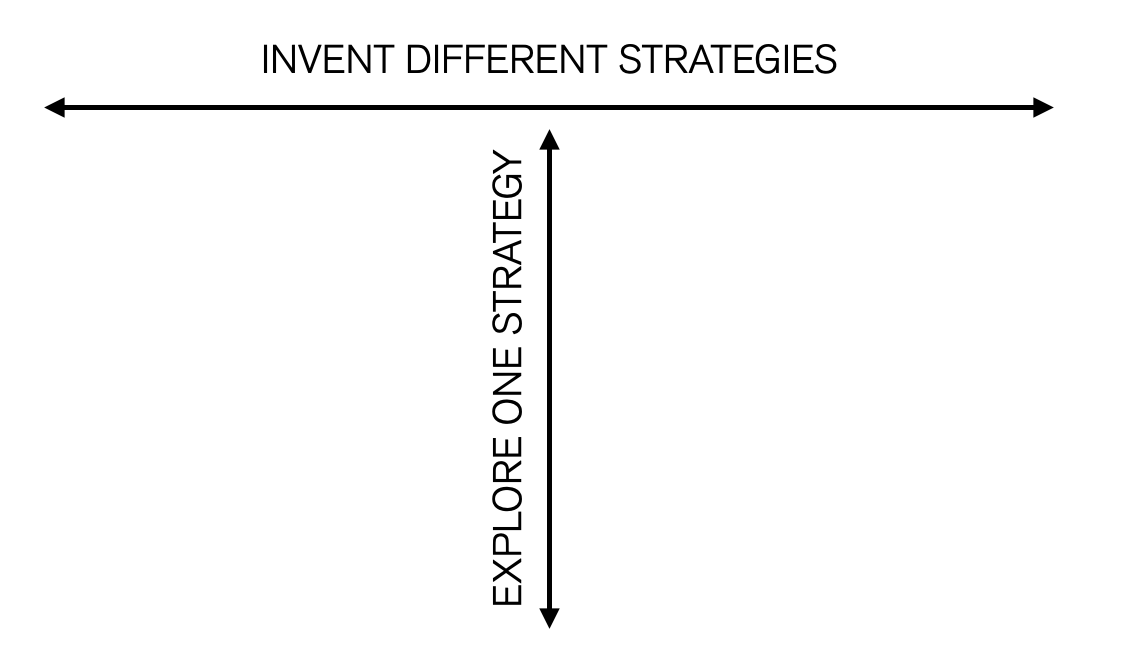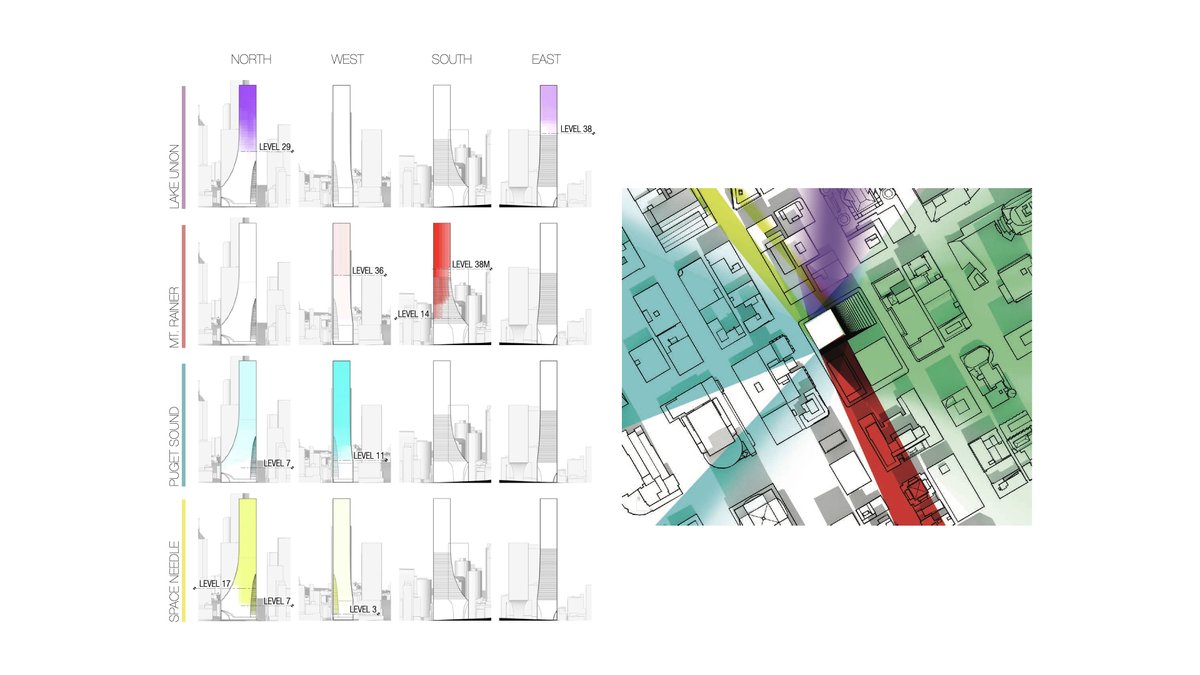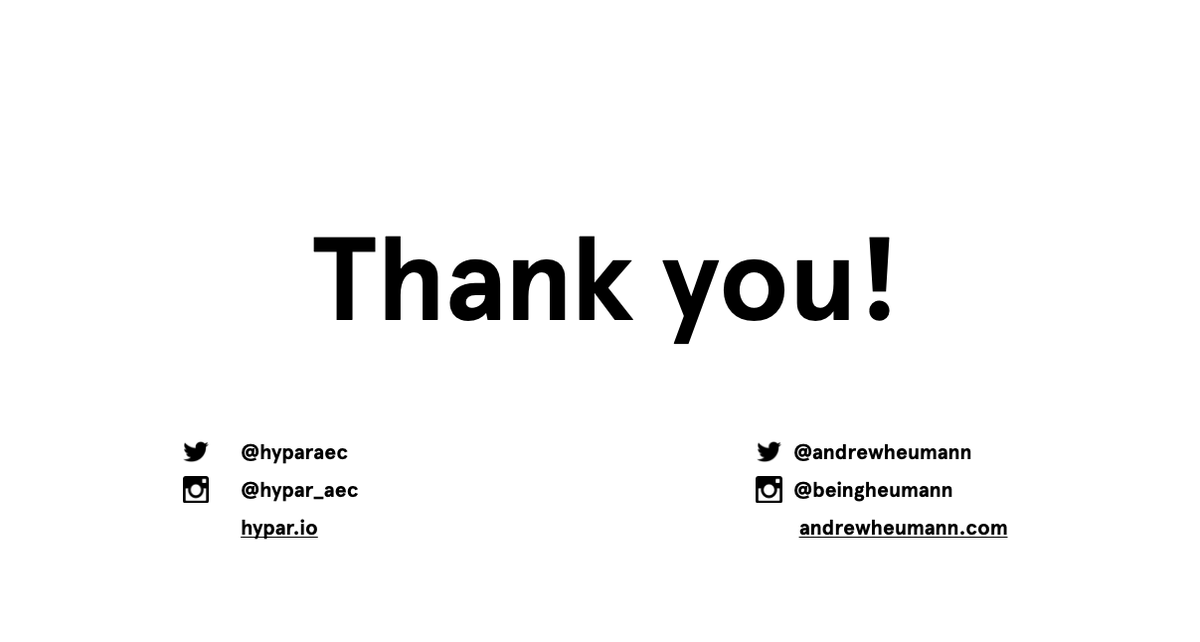
My presentation, "Designing Design Tools" to
@AIADetroit's #Co·de·D group is now online!
A tweet thread version of the talk below :)
@AIADetroit's #Co·de·D group is now online!
A tweet thread version of the talk below :)
It starts with the story of the assignment that almost broke me, in my 1st yr of arch school... hand-calculating and cutting this waffle-grid box to hold a rock.
You can't tell, but in this pic I am crying from exhaustion and shame at not finishing in time for review.

You can't tell, but in this pic I am crying from exhaustion and shame at not finishing in time for review.


I almost quit the architecture program then and there. Thankfully it was not long after that that "explicit history" — later grasshopper — came out. Imagine my surprise to learn that the horrible, repetitive process that nearly broke me... could be fully automated! 



I went on to graduate, and went to work for @NBBJDesign as a junior designer, but quickly became heavily involved in the firm's computational efforts. One of my last projects was this lobby for @twounionsq... which has quite a lot in common with that same waffle grid script. 



Complex-shape wrangler is probably the most common role played by the "Computational Designers" at a firm. Others include:
* interoperability jockey

* interoperability jockey


But even with the promise of reuse, the responsibility for adapting and running these routines always seems to fall back on the computational designer, because others are unwilling to deal with figuring this out: 

So I got really interested in making tools that were properly reusable. Had a lot of conversations with @mpsyp about the "productization" of computational tools. This was the germ of #HumanUI — how can we make friendly interfaces for our scripts? 

in 2016 I moved to NYC to work for @WB_DigitalCraft w @shaneburger and @brianringley. We built tons of tools using Human UI — reusable analysis tools, custom "apps" for client engagements," and parametric design exploration tools for design teams: 





But the coolest thing by far was to see what other people built with Human UI — it always blows my mind to see the creativity and diverse applications.
However, there's one question I always get — and it's been my great shame that there was never a good answer: How to put a Human UI on the web, or make it available to someone who doesn't have Grasshopper? (More on this later 😎) 

Fast forward to mid-2017 — I accepted an offer to join @WeWork and work on @dr_danieldavis's research team, where @LeapingLlamas and @carlo_d_bailey had already begun to build office layout automation algorithms.
One of the things I focused on was building an interface that tied this in to designer workflows. My first attempt was cool, but a bit of a failure — it didn't really align with how designers were thinking about the problem.
We conducted a bunch of user research to better understand why this wasn't right, and validate that this was worth automating at all. 





We were more successful with a tool that let designers directly manipulate the spaces, and laid out the desks within. The core algorithm was the same, but the UI enabled direct manipulation to study the interaction of different levels of the design problem: spaces vs furniture.
Further work with @jonatansch, Serena Li, and Leland Jobson expanded this concept to lighting layout automation with a tool called "Get Lit." A purpose-built, augmented design environment for the specific problem of laying out lighting in new WeWork locations.
Seeing all this, a common reaction I hear is "ok, maybe all this is great for repetitive, boring work, but it could never be useful for problems of aesthetics or truly creative design exploration." That question lies at the heart of the other side of my work: generative art. 

That piece in the last tweet was generated by the same algorithm as all of these (and hundreds more): 







I've been interested for a long time in how to maximize visual novelty with the same exact code. There always seems to be a moment where I am no longer surprised by the output of any given algorithm. Maybe it takes 200 iterations, maybe 1000.
And whether or not you think my art is any good, this idea — that any given algorithm will eventually cease to surprise us — has significant consequences for "generative design." 

Folks who've followed me for a while have probably heard me rant about this, and it's been something of a hot topic for a while. Is Generative Design "Doomed to fail"? danieldavis.com/generative-des… 

The classic model of generative design — the generate-evaluate-evolve loop — often leaves people missing the fact that "evolve" is the easy part. Creating a good generative algorithm to produce solutions is HARD. Meaningfully evaluating whether a solution is any good is HARD. 

And for the record, I am not anti generative design! I just don't want us to fall into the trap of thinking that the algorithm is coming up with "new design ideas." Even the best generative design work — like this classic from The Living — is basically just exploring 1 strategy. 

Human designers effortlessly slip between these two modes: am I exploring this strategy, or am I inventing new strategies? An in reality this happens in a looping, nested way, exploring each strategy might involve inventing more mini-strategies along the way. 

Generative Design only works on one of these axes. and that's fine! But let's not imagine that the work of design is going away.
To shift gears a little:
There's a phenomenon in the industry that many have observed and commented on (esp. @ikeough): the crazy proliferation of people building the same things over and over again. There's a good reason for this, and a bad reason for this.
There's a phenomenon in the industry that many have observed and commented on (esp. @ikeough): the crazy proliferation of people building the same things over and over again. There's a good reason for this, and a bad reason for this.

The good reason is that people are creative and inventive, and may have many different strategies to solve a problem! The bad reason is that it's often more work to integrate someone else's solution than it is to build your own. 

So, a little mini-recap: What do we want out of our design tools? What should future design environments look like? 

And, savvy among you probably saw this coming: this is a big part of why and how we're building @HyparAEC.
We're building the platform that will let you automate the boring stuff, like fabrication rationalization
Customize your design environment with data readouts, legends, tables, bespoke UIs (See also
https://twitter.com/HyparAEC/status/1329416385102024704?s=20)
We're adding direct modeling and manipulation tools all the time. (a sneak preview below). Sometimes you don't want a slider, you just want to grab the damn point and move it.
These tools should be accessible from anywhere, on any device, easy to share with colleagues, consultants, clients: 

And lastly and most importantly, it should be *effortless* to grab someone else's logic or tool and integrate it into your workflow.
With or without Hypar, though:
1. Automate the boring stuff
2. Embed your goals into your design environment
3. Make your expertise accessible
4. Draw and model as much as you script
5. Use computation to go deep, use your brain to go wide
6. Resist the urge to reinvent the wheel
1. Automate the boring stuff
2. Embed your goals into your design environment
3. Make your expertise accessible
4. Draw and model as much as you script
5. Use computation to go deep, use your brain to go wide
6. Resist the urge to reinvent the wheel
• • •
Missing some Tweet in this thread? You can try to
force a refresh







